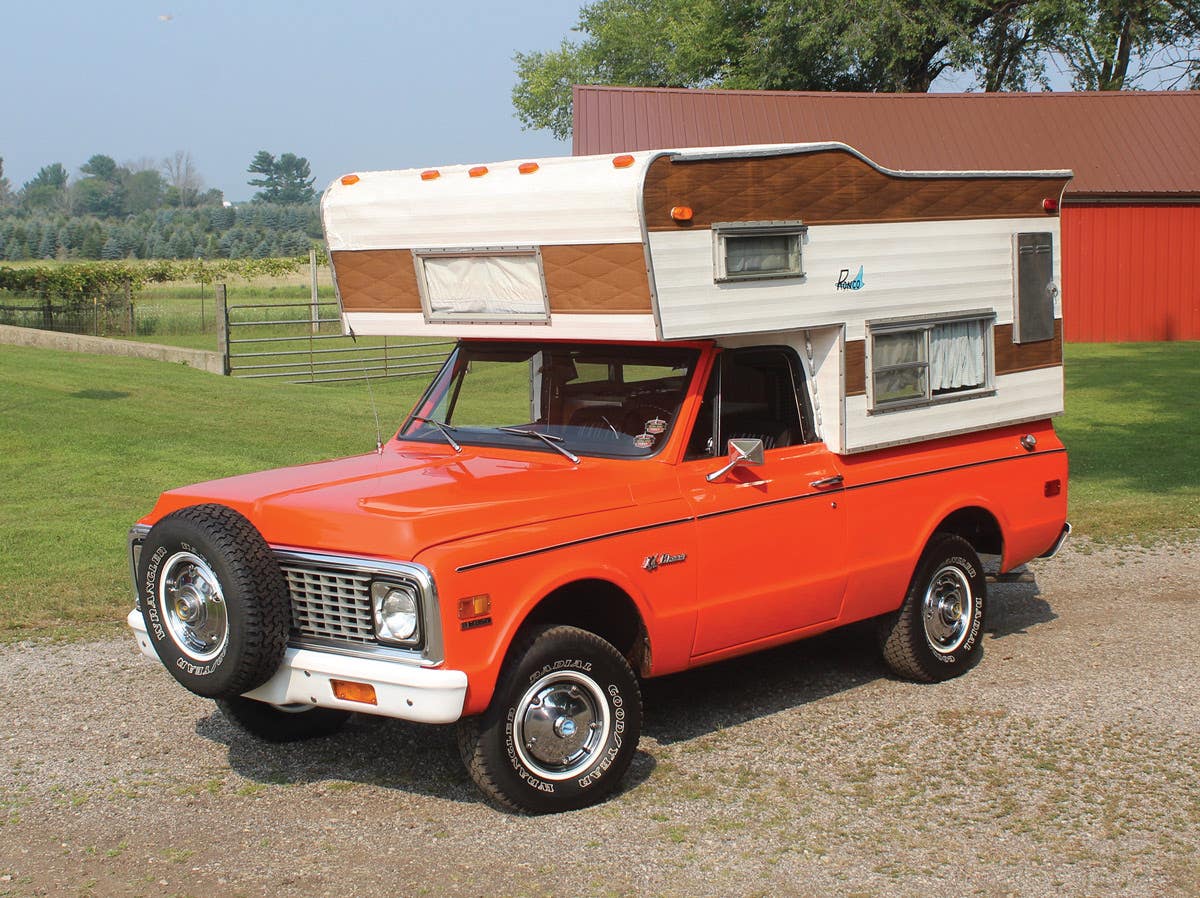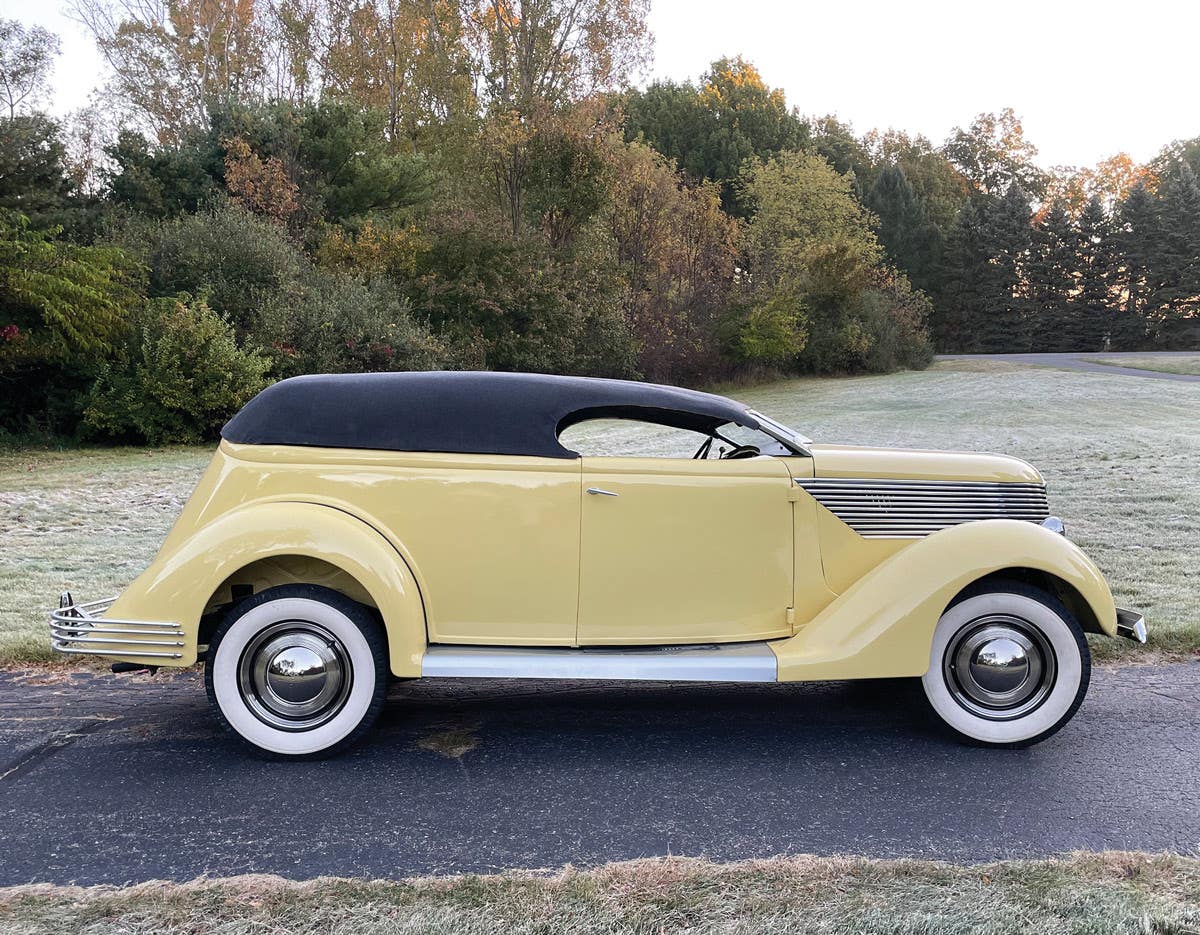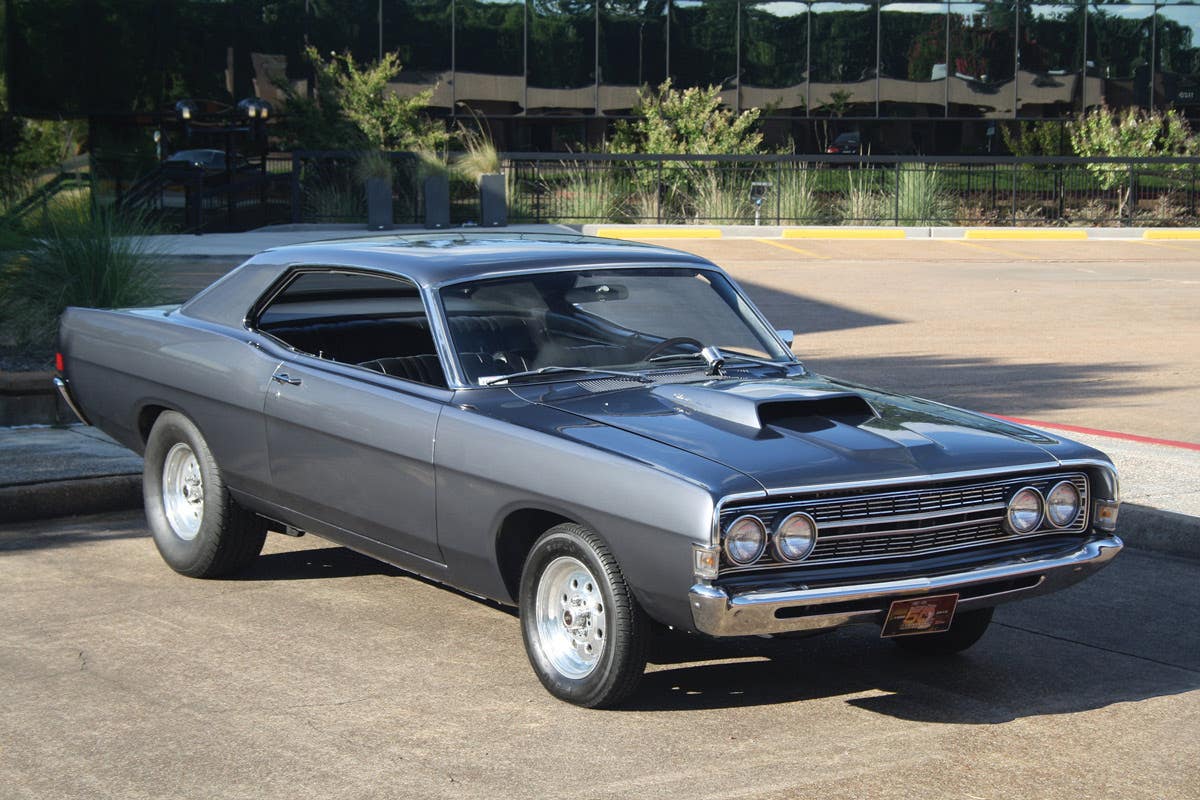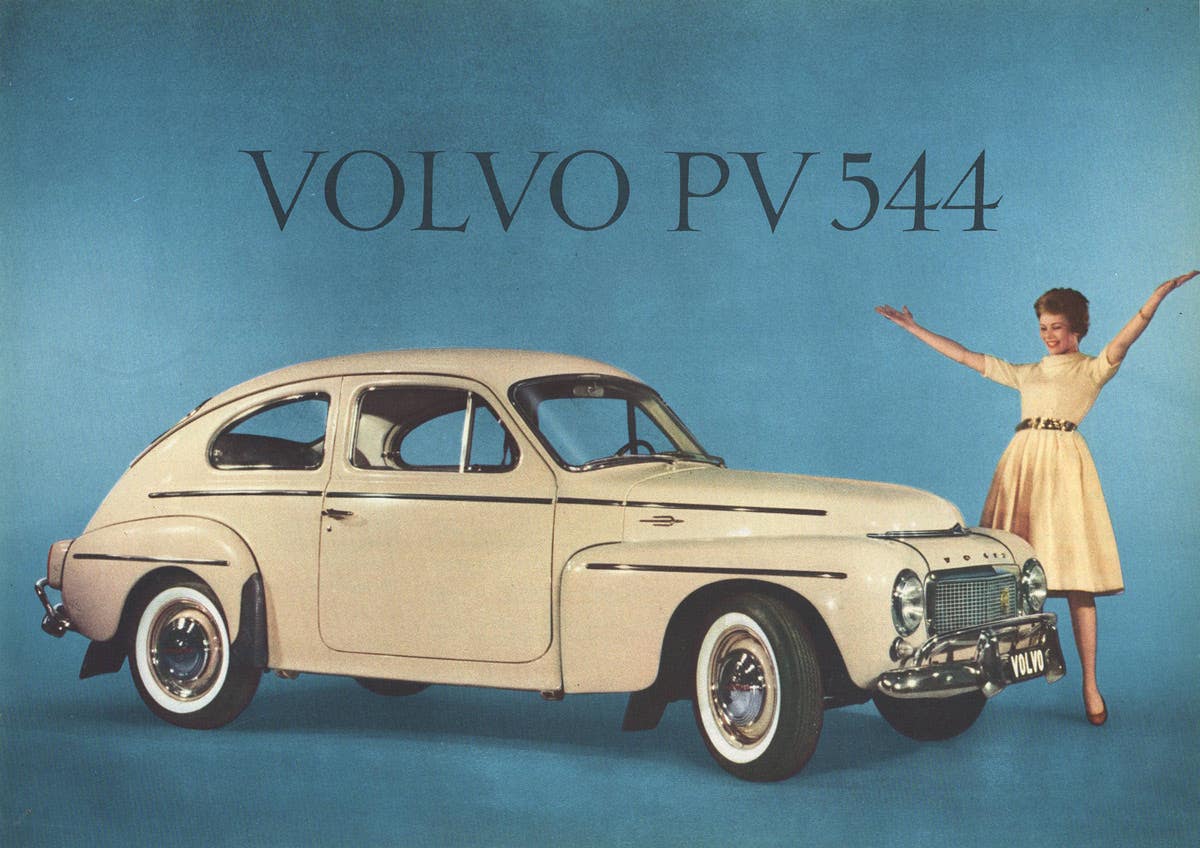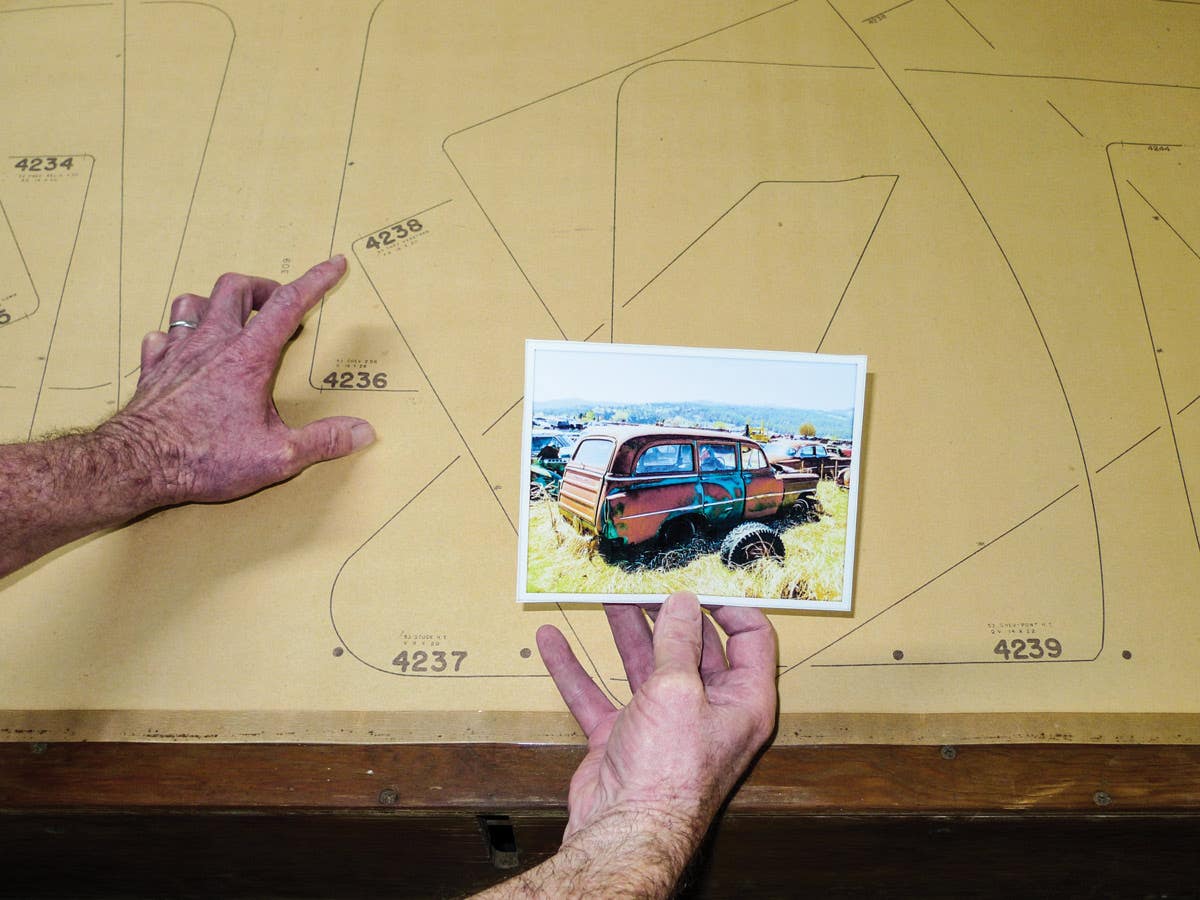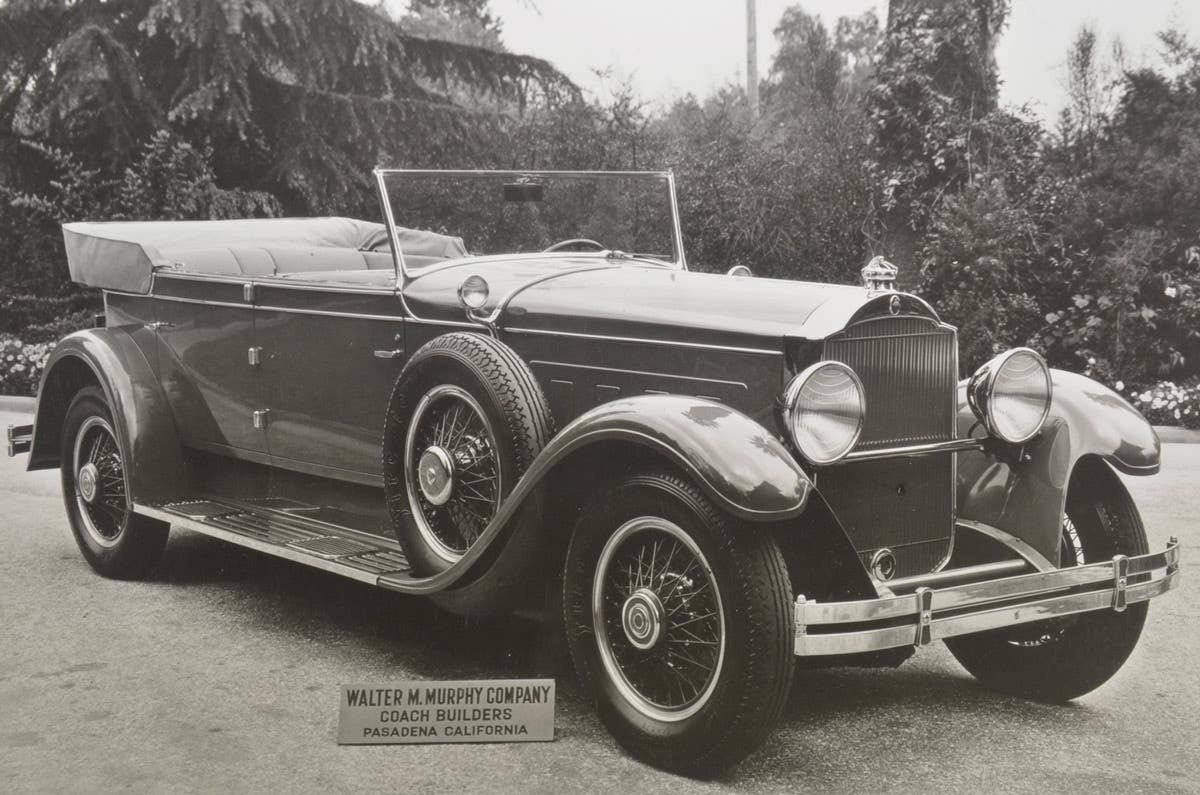Razzle, dazzle and fizzle of the Legendary Tucker
There have been plenty of one-year wonders in automotive history, but there may never have been a shooting star that shone as brightly as the Tucker.
The Tucker automobile was christened a winner in more ways
than one. Preston Tucker is shown in the background.
The Tucker automobile was perhaps the most independent of all. “Nearly 1,700 stockholders gave unanimous approval to the Tucker program and then watched the first Tucker production car put through its paces in the 84-acre manufacturing building, assuring themselves that it reverses perfectly and performs like a champion.” Thus stated the official press release from the Tucker Corp. at 7401 South Cicero Avenue in Chicago. The event took place on March 9. The release was dated March 18, 1948.
John B. Kennedy was on hand. In his day, he was an internationally revered radio commentator. He told the enthused crowd that Tucker was ready for the April launch of a “new and different program” called “Speak Up, America.” To pump up the cheerful solidarity of the event, Kennedy made sure the public address system played the program’s musical theme, “Stout Hearted Men.”
Then Preston Tucker stepped to the fore as Reginald Davis, on behalf of Automotive Engineer Magazine in Detroit, presented Mr. Tucker with the coveted engineering award as “Man of the Year” by readers of the magazine.
Mr. Tucker was in good company, if the other contenders were the gauges. They were Charles Kettering, retired vice president of research at General Motors; Edgar DeSmet, chief design engineer for Willys; Reid Railton who developed the Railton Mobil-Special acclaimed as the world’s fastest automobile in 1948; and Delmar Roos, the Willys-Overland vice president over engineering.
But Mr. Tucker soon would be singled out from those others in a different way. He was becoming the target of strong, ceaseless and belligerent attacks in the press, on radio, in business circles and among government officials. He wasn’t sure if it would get worse.
Still, for a fleeting moment, Tucker smiled amid the exuberance of the crowd as he was saluted as “Man of the Year.” The award was made for “his leadership in the development of the first radically improved postwar automobile.”
Officials at General Motors, Ford, Chrysler, Packard, Hudson, Nash, Willys, Crosley and Studebaker must have taken notice. Mr. Tucker had put the car-buying public on its proverbial ear with the knockout car carrying his name. But there were whispers floating among nay-sayers. Was this car REALLY that good? Was it REALLY going to be produced? What was causing its delay?
Preston Tucker knew there was talk. He expected it. His flamboyant never-say-die attitude brought it on. To some he was a scoffer against existing auto makers. To others he was a fast-pitch salesman who could woo anyone to buy. To a select segment he was a charlatan full of sweet-coated lies, a devilish mesmerizer who saw people as dollar signs and relieved them of their cash.
Tucker knew all this. Few things escaped his scrutiny. So he attempted to head off any negativity on March 9. He pointed out that the massive plant had only been obtained in the past November. Even so, “our machine tooling is being installed,” he told the audience. “Dies and stampings are completed. Paint and upholstery lines are nearly installed. Stockpiles are building up. Engines are merging with other completed units of the car. Bodies and chassis, as you see, are moving on the actual production lines, blazing the way for mass production models.”
He wanted it that way. He prayed that the plant would hardly be big enough to keep up with demand.
He knew how to instill excitement. On that grand day, Tucker urged stockholders to file into building Number 4, “where they saw Tucker cars in red, blue, green and gray. But their heartiest cheers were reserved for the moment when one of the cars flashed down a runway inside the plant at speeds from 40 to 60 miles an hour.”
News reporters watched. They, too, were excited over the apparent success of this new Tucker. Many Americans wanted to cheer a winner rather than boo a failure. Usually cynical, these reporters seemed honestly interested. They were impressed with two things — the car’s performance and the “fact that not a single dissenting voice was raised during the business session.”
Preston Tucker had secured an inner circle of friends, dealers and critics. He wanted to increase that following by taking his message to the people across America who sat beside their radios each night. That program to which Kennedy made reference on March 9 was slated for its first broadcast on Sunday, April 4, 1948.
This was to be the car’s biggest promotion. The program would air on 85 stations on the Columbia Network. The time in most cities would be 3 p.m., Central Standard Time. “All of these stations broadcast from cities in which our distributors are located,” said the Tucker Corp. These stations “will give us a tremendous listening audience and will penetrate into every nook and corner of the country.” Kennedy, as host, was to foster a discussion of major topics pertinent to the day. Guests would include news reporters, experts and “average Americans,” said Tucker officials.
“The question to be considered each week will be announced in advance and a series of important prizes will be offered for the best written opinions on the subject under discussion,” explained Cliff Knoble, director of advertising. “First among these prizes will be a Tucker ’48. Nineteen additional prizes will be presented weekly.”
Initial topics seemed mundane by today’s standards, but were hotly debated in 1948: “Should a Military Man be a Candidate for President?,” “Are School Teachers Underpaid?” and “How Much is a Living Wage Today?”
Granted, it was a casual way in which the Tucker message was delivered, couched in a program that had no content devoted to cars, outside of commercials. But it worked then, and it works now.
Fred Rockelman was executive vice president for Tucker. He was a conservative in many ways, but he could not hold back in his enthusiasm. “It is difficult to be conservative in speaking about the progress that is everywhere to be noted in this vast plant.” He added, “Hundreds of thousands of details must be handled in preparing for production on such a gigantic scale … near-miracles are taking place.”
He mentioned how, when he worked in Detroit, “we used to display a new model each year, usually in January. Work then began immediately on the next new model … a full year was thus required … yet, when the new model came out, it often did not represent a change of more than 10 percent from the former model. One full year to complete a mere 10 percent change!”
He emphasized, “We’re NOT merely making a 10 percent change on an old model. We are building a WHOLLY NEW CAR, A BETTER CAR, and on a scale that will enable us to gain the economies of huge volume — and thus to offer the finest value in motordom. And we’re distinctly NOT requiring a full year in which to do it.”
What were the hallmarks of the ’48 Tucker? It held to the road with a low center of gravity. The company predicted less wobble in the steering. Precision balance gave maximum safety. It was said to stop 63 percent faster than other cars. There was a “safety chamber” in the front seat, since the engine was mounted in the rear. That chamber was an idea taken from race cars of which Preston Tucker was very familiar. The safety glass windshield could be pushed out, not in, which allowed for escape in a terrible accident. The center “Cyclops Eye” brightened the road. The company promised that Tucker’s headlights had a 24-volt super-battery “to guarantee a life-long safety margin of electrical power.” And the Tucker for 1948 was fast.
It had distinction. Chief stylist Alex Tremulis headed a winning team that included Philip Egan on exterior design and Audrey Moore for interior appointments, so the company noted. Tremulis said this was the first truly streamlined car ever built.
No one doubted it, even as legal rumblings grew in intensity. No one doubted that Preston Tucker was a smoother operator. Even so, his company was about to be snagged, ripped and scuttled. The Tucker was only made for one year — 1948 —and just 51 were constructed. But those rare cars were the stuff of legends then, and now.
CLICK HERE to tell us what you think in the Old Cars Weekly forums



